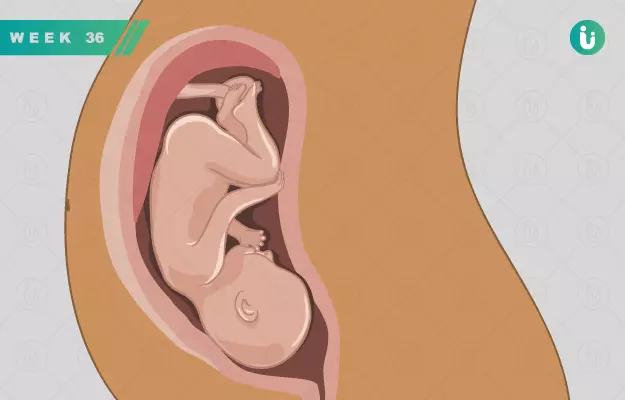Welcome to the 36th week of your pregnancy! This week, you are entering the ninth month of pregnancy. “Just four more weeks to go” is what you can tell yourself this week to cope with the stress of the final trimester of pregnancy.
If you are feeling nervous about your approaching delivery date, remember that being a little anxious about the whole delivery process is absolutely normal. Talk to your doctor, and women in the family who have already been through this experience if it helps to alleviate your nervousness—this could also help you prepare yourself well.
By the 36th week, your regular visits to the doctor for pregnancy check-ups might have increased in frequency. Your mode of delivery and the hospital where you are going to deliver must have been planned already. Do not forget to baby proof your home if you have not done that by now.
The 36th week is a time to be watchful, as some undesirable complications might arise this week. Being aware of all such situations and following each and every piece of advice that your doctor might have given you could go a long way towards securing your safety as well as your baby's.
Your precious pregnancy must be the most important thing in your life right now. Household work and your job are also important but you must take adequate rest as recommended by your doctor and not exert yourself too much. You must take care of what and how much you are eating currently as recommended by your dietician.
The aim of this article is to make you aware about the development of your baby, the various changes that may take place in your own body and the complications that may occur in the 36th week of pregnancy.


































